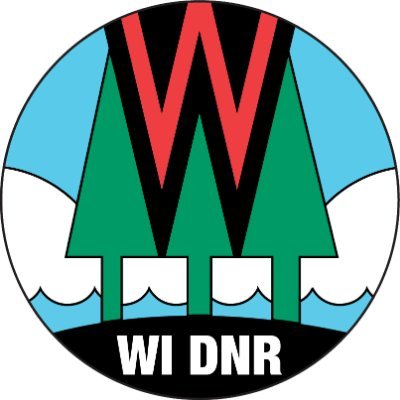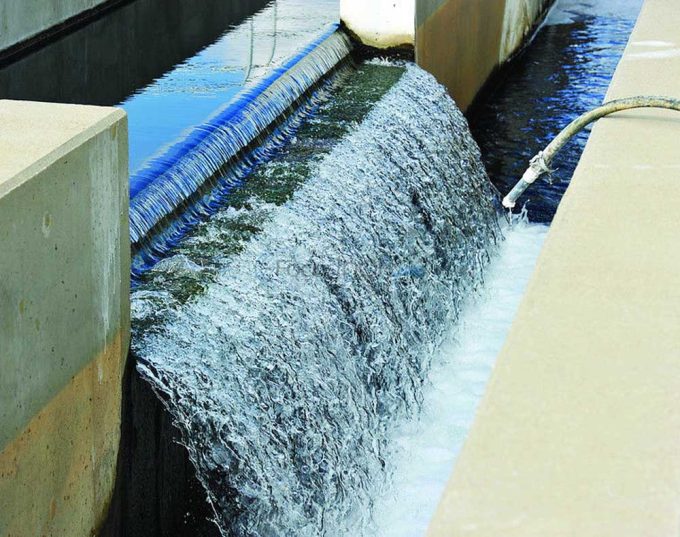Report on the Sandpoint Wastewater Treatment Facility Bond Measure
Executive Summary
The City of Sandpoint’s wastewater treatment facility, constructed in the 1950s, has reached the end of its operational lifespan and poses a significant and growing risk to public health, environmental quality, and municipal finances. A proposed bond measure seeks to fund the construction of a modern treatment plant. This investment is critical for ensuring compliance with environmental regulations and is directly aligned with the achievement of several United Nations Sustainable Development Goals (SDGs), including SDG 6 (Clean Water and Sanitation), SDG 3 (Good Health and Well-being), SDG 11 (Sustainable Cities and Communities), and SDG 14 (Life Below Water).
Assessment of Current Infrastructure and Associated Risks
Facility Condition and Operational Deficiencies
The existing wastewater treatment plant is critically outdated and unreliable. Key factors contributing to its high-risk status include:
- Age and Construction: The facility is nearly 70 years old and was built using salvaged parts from a former naval base.
- Systemic Failure Risk: The plant can no longer meet modern demands and is at imminent risk of complete failure, which would disrupt essential sanitation services.
- Impact on SDG 11: The current state of this critical infrastructure undermines the goal of making cities and human settlements inclusive, safe, resilient, and sustainable.
Public Health and Environmental Impact
The failing system presents a direct threat to the community and local ecosystems. These threats are in direct conflict with global sustainability targets.
- SDG 3 (Good Health and Well-being): The facility has repeatedly discharged water with high levels of E. coli, a bacterium that can cause serious illness. A recent spill of untreated sewage further highlights the immediate public health danger.
- SDG 14 (Life Below Water): Inadequately treated sewage is discharged into the Pend Oreille River, threatening aquatic life and the health of the entire river ecosystem. This directly contravenes the goal to prevent and significantly reduce marine and freshwater pollution.
- SDG 6 (Clean Water and Sanitation): The plant’s inability to properly treat wastewater compromises the availability of clean water and the sustainable management of sanitation services for the community.
Regulatory Compliance and Financial Analysis
Record of Non-Compliance
The Sandpoint sewer plant has a documented history of failing to meet regulatory standards, resulting in financial penalties and legal risks.
- Pollution Violations: The facility has consistently violated its permitted pollution discharge limits for several years.
- Financial Penalties: A recent sewage spill resulted in a $3,450 fine. Continued violations could lead to fines of up to $5,000 per day.
- Legal Exposure: The city is vulnerable to costly lawsuits filed under the Clean Water Act, which would place a severe financial burden on the community.
Economic Projections: Investment vs. Inaction
Delaying the necessary upgrades will result in significantly higher costs for residents. The proposed bond measure represents the most financially responsible path forward.
- Cost of Inaction: Without the bond, emergency repairs and escalating fines could cause sewer rates to increase by an estimated 600% over five years. The city also risks losing access to crucial state and federal funding.
- Cost of Investment: With the bond, the city can secure a $38 million low-interest state loan. The cumulative rate increase is projected to be approximately 106% over the same five-year period.
Conclusion: A Strategic Investment in a Sustainable Future
Alignment with Sustainable Development Goals
Passing the bond measure is a decisive step toward meeting local needs and global sustainability objectives. The project will directly advance the following SDGs:
- SDG 6: Guarantees access to adequate and equitable sanitation and improves water quality by reducing pollution.
- SDG 9: Develops quality, reliable, sustainable, and resilient infrastructure to support community well-being.
- SDG 11: Upgrades critical infrastructure to make Sandpoint a safer and more sustainable city.
- SDG 14: Protects the freshwater ecosystem of the Pend Oreille River from land-based pollution sources.
The proposed bond measure offers a fiscally prudent and necessary solution to a critical infrastructure deficit. It provides a long-term plan to protect public health, preserve environmental resources, and ensure the community’s compliance with its regulatory obligations, thereby securing a sustainable and resilient future for Sandpoint.
Analysis of Sustainable Development Goals in the Article
1. Which SDGs are addressed or connected to the issues highlighted in the article?
- SDG 6: Clean Water and Sanitation: This is the primary goal addressed. The article focuses entirely on the need to upgrade a wastewater treatment plant to ensure reliable sanitation (“keep flushing your toilet”) and prevent pollution of the Pend Oreille River, thus protecting water quality.
- SDG 3: Good Health and Well-being: The article directly connects the failing wastewater plant to public health risks. It mentions the potential for serious illness from bacteria like E. coli and highlights the need to protect “human health.”
- SDG 11: Sustainable Cities and Communities: The issue revolves around essential urban infrastructure. The article discusses the need for a “modern and efficient system” to ensure the city of Sandpoint has reliable services and avoids the financial and environmental catastrophe of a plant failure, making the community more resilient and sustainable.
- SDG 14: Life Below Water: The article emphasizes the environmental impact of discharging inadequately treated sewage into the Pend Oreille River. It explicitly mentions the goal of protecting waterways and “every creature that depends on the river” from pollution.
- SDG 17: Partnerships for the Goals: The article describes a multi-stakeholder approach to solving the problem. It mentions the city seeking state and federal funding, securing a state loan, and civil society organizations (Idaho Conservation League, Sandpoint Moms) collaborating to raise public awareness and support.
2. What specific targets under those SDGs can be identified based on the article’s content?
- Target 6.2: “By 2030, achieve access to adequate and equitable sanitation and hygiene for all…” The article’s core argument is the need to replace a “crumbling sewer treatment plant” to provide “reliable and undisrupted service” for the residents of Sandpoint.
- Target 6.3: “By 2030, improve water quality by reducing pollution…” The article details how the current plant has “violated its permitted limits for pollution discharge consistently” and that the proposed upgrades will “protect human health and water quality by adequately treating sewage before it is discharged into the Pend Oreille River.”
- Target 3.9: “By 2030, substantially reduce the number of deaths and illnesses from… water… pollution and contamination.” The article warns of the “risk to public health” and mentions “alarming recurring violations” for high levels of E. coli, a bacteria that “can cause serious illness, including vomiting and diarrhea.”
- Target 11.5: “By 2030, significantly reduce… direct economic losses… caused by disasters, including water-related disasters…” The article frames the potential failure of the plant as a “catastrophe” that would lead to significant economic costs through fines (“up to $5,000 per day”) and potential lawsuits, in addition to the environmental damage.
- Target 14.1: “By 2030, prevent and significantly reduce marine pollution of all kinds, in particular from land-based activities…” The article discusses pollution from a land-based source (the wastewater plant) entering a river. It cites a “spill of untreated sewage” and consistent “pollution discharge” violations as the problem the bond aims to solve.
- Target 17.17: “Encourage and promote effective public… and civil society partnerships…” The article highlights the city’s efforts to secure a “$38 million low-interest loan from the state of Idaho” and the partnership between the “Idaho Conservation League and Sandpoint Moms” to organize a canvassing event.
3. Are there any indicators mentioned or implied in the article that can be used to measure progress towards the identified targets?
- Indicator for Target 6.3 (Proportion of wastewater safely treated): The article implies this is a key metric. The plant’s inability to “reliably meet today’s demands” and the need to “adequately treat sewage” suggest that the proportion of safely treated wastewater is currently insufficient and is the primary outcome to be improved.
- Indicator for Target 6.3 (Ambient water quality): The article points to specific measures of water quality. The mention of “high levels of E. coli” being discharged into the river serves as a direct indicator of poor water quality resulting from inadequate wastewater treatment.
- Indicator for Target 3.9 (Illness from unsafe water/sanitation): While not providing statistics, the article implies that the incidence of waterborne illnesses caused by bacteria like E. coli is a relevant indicator of the public health risk.
- Indicator for Target 14.1 (Pollution levels): The article provides concrete, measurable indicators of pollution. These include the number of “pollution discharge” violations, the frequency of these violations (“consistently for the past several years”), and the financial penalties incurred (“a $3,450 fine for the pollution violation”). Reducing the number of violations to zero would be a clear measure of success.
4. Table of SDGs, Targets, and Indicators
| SDGs | Targets | Indicators |
|---|---|---|
| SDG 6: Clean Water and Sanitation |
6.2: Achieve access to adequate and equitable sanitation.
6.3: Improve water quality by reducing pollution and halving the proportion of untreated wastewater. |
– Reliability of sanitation services for residents. – Proportion of wastewater safely and adequately treated. – Levels of E. coli in the water discharged into the Pend Oreille River. |
| SDG 3: Good Health and Well-being | 3.9: Substantially reduce illnesses from water pollution and contamination. | – Incidence of waterborne illnesses (e.g., from E. coli) in the community. |
| SDG 11: Sustainable Cities and Communities | 11.5: Significantly reduce economic losses from water-related disasters. | – Economic losses from fines for pollution violations. – Investment in resilient infrastructure (value of the bond). |
| SDG 14: Life Below Water | 14.1: Prevent and significantly reduce pollution from land-based activities. | – Number and frequency of pollution discharge violations. – Amount of untreated sewage spilled. |
| SDG 17: Partnerships for the Goals | 17.17: Encourage and promote effective public and civil society partnerships. | – Amount of state and federal funding secured. – Number of civil society partnerships formed (e.g., Idaho Conservation League and Sandpoint Moms). |
Source: sandpointreader.com







